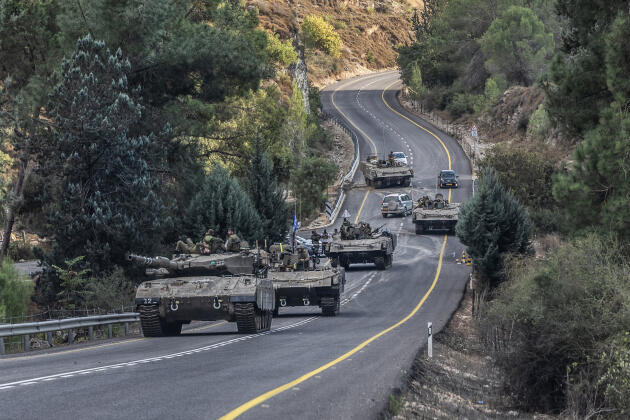Iran-Hamas Crisis and the Present Violence Flare in Gaza
The present flare of violence on the Israeli-Gaza border began after an Israeli air-strike killed Zuhair al-Qaisi (Abu Ibraim), secretary-general of the Popular Resistance Committees (PRC). Another senior PRC leader, Ahmad al-Khanini, was also killed. He was freed from a prison in Israel last year in the exchange for Israeli soldier Gilad Shalit.
Al-Qaisi’s targeted killing was decided after the Israeli intelligence learned he was preparing a major terrorist attack in Israeli territory through the Sinai Peninsula, similar to the terror attack of 18 August 2011, when 8 Israelis were killed and 30 wounded (See “The Popular Resistance Committees: Portrait of the Terrorist Organization Responsible for the Series of Combined Terrorist Attacks North of Eilat, Israel’s Southernmost City”).
The killing of Al-Qaisi provoked immediately the retaliation by the PRC in the form of a barrage of more than 150 Grad and Qassam missiles reaching the southern Israeli cities of Beer-Sheva, Ashkelon and Ashdod and other minor towns and villages.
The interesting thing is that the Palestinian Islamic Jihad (PIJ) intervened immediately to support the PRC fighters and actually most of the fired long range missiles, and also most of the 18 killed Palestinian militants, belong to this organization. The PIJ is known to be a proxy of the Tehran regime and aligned to it on the ideological level. The PIJ, and the PRC, have received during the last year heavy weapons, including long-range missiles, from Iran.
According to the Israeli Army’s Spokesman Brig.-Gen. Yoav Mordechai, Iran is encouraging the PIJ to continue firing rockets against Israel.
Hamas for the moment did not intervene in the fighting. Moreover, Hamas is actively trying to get Egypt to broker a cease fire and a high-level Hamas delegation headed by Musa Abu Marzouk and Mahmoud Zahar arrived in Cairo for this purpose. The efforts came as various Palestinian groups in the Gaza Strip announced that they would abide by a new cease-fire with Israel.
The current round of fighting is still continuing and will probably take several more days to achieve a cease-fire.
The reaction of the various players in this event should be analyzed in the framework of the regional situation and the quickly shifting alliances .
Tehran fears that the “Tehran-Damascus resistance axis” might crumble as a result of the grave situation of the Assad regime and the loss of Tehran’s influence over its proxies, especially Hamas. The Hamas – Fatah agreement of February 6, 2012 in Doha to form a national unity government headed by Palestinian Authority President Mahmoud ‘Abbas, the withdrawal of Hamas leaders from their headquarters in Damascus, and the statements by the head of the Hamas administration in Gaza, Isma’il Haniya, on February 24, in support of the anti-Assad rebels in Syria prompted Tehran to warn the Hamas leadership against abandoning the path of “resistance.”
On this issue see the detailed analysis by A. Savyon & Y. Mansharof, “Iran-Hamas Crisis: Iran Accuses Hamas of Relinquishing the Path of Resistance”.
Hamas prefers these days to rely on the new military sponsored government in Egypt and wait for the Muslim Brotherhood impose a more Islamist regime, after the presidential elections in July 2012 and the drafting of a new constitution. At that moment Hamas will have the backing of its sister organization in case of a serious crisis with Israel.
According to Palestinian-Jordanian scholar and political columnist Rami Khouri, “Hamas’ reversal on Syria is an important example of how Islamist groups continue to make the transition from their previous world of abstract political opposition and often bloody and costly resistance to the new environment in which they must grapple more convincingly with real-world conditions and options, especially the advent of populist legitimacy and accountability in Arab countries.” See his interesting article “Hamas rattles the resistance front”.
The PIJ obviously is serving the Iranian interests in trying to destabilize the region, especially vis-à-vis Egypt, and at the same time trying to present itself as the true defender of the Palestinian people’s interests.
Israel is extremely worried that Sinai could become the new platform for Palestinian terrorism from Gaza, possibly allied with al-Qaeda and Egyptian Salafist elements. Military strikes against terrorists in Egyptian territory, not sufficiently secured by its authorities, could seriously endanger the already sensitive relations with Egypt and limit Israel’s margin of maneuver against terrorism activity from Gaza. The present operation should thus try to dissuade the Palestinian terrorist groups from using the Sinai and convince them that they will pay for such activities in Gaza itself.






